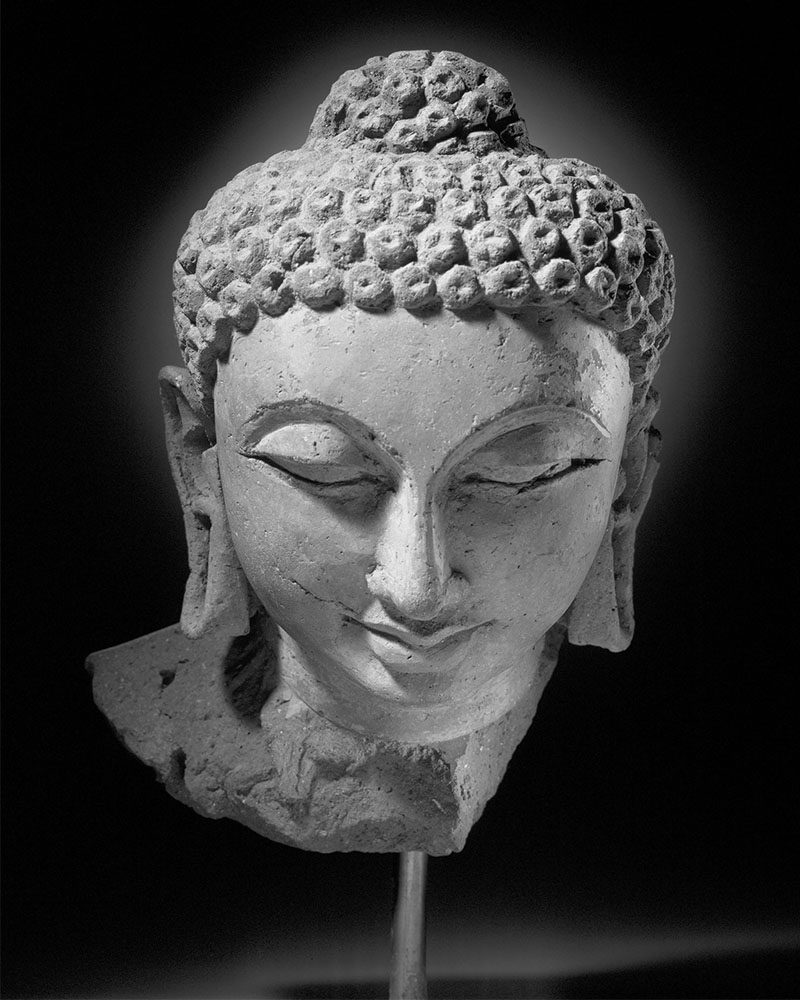Terracotta statues found at the archaeological site of Devni Mori in the Aravalli district of present-day Gujarat, the Devni Mori sculptures were discovered among the ruins of Buddhist structures excavated between 1960 and 1963. These sculptures, most of which are four to six inch tall images of the seated Buddha, are the oldest examples of Buddhist art in Gujarat. They are generally dated to the fourth or fifth century CE, although there has been some debate regarding this estimate.
Devni Mori contained a stupa and vihara. A casket recovered from the stupa bears an inscription claiming that it contained a relic of the Buddha, suggesting that Devni Mori was a major pilgrimage centre; it was also located close to major trade routes in western India. The inscription on the casket also implies that the stupa was built with the patronage of king Rudrasena III of the Kshatrapas in the late fourth century CE, which has been corroborated by inscribed coins and archaeological evidence from the site. The sculptures were likely created very soon after.
The style of the sculptures — which comprise twenty-two Buddhas and one Durga figure — reflects a variety of influences. The sharp facial features, robes draped across both shoulders, and wavy hair are all reminiscent of the art of Gandhara. The thin, regular folds on the cloth are typical of the Mathura style, as are the bared shoulders present in some sculptures. All of these can be seen in different combinations among the sculptures at Devni Mori, suggesting that artisans in Gujarat encountered images not only in the relatively new Mathura style of the second and third centuries CE, but older Gandharan images from the first and second centuries CE, perhaps indirectly through Mathura. Scholars have also speculated that some of these figures, especially those with characteristics such as downcast eyes, may have been influenced by or imported from other centres.
The only non-Buddha figure found at the site is an image of Durga, bearing a striking resemblance to a relief in cave 6 at Udayagiri, dating to 401 CE. All these similarities suggest that artistic production at Devni Mori was highly attuned to cultural developments in the Gangetic plains, especially the emergence of the influential artistic idiom of the Gupta Empire; this may be a result of its proximity to trade routes.
All the sculptures found at Devni Mori are made with terracotta, generally produced with clay from the banks of the nearby Meshvo river. Stone appears to have been more difficult to source and seems to have been reserved for functional uses.
In the years that followed, the site was submerged due to the construction of a nearby dam. As a result historians rely on the excavation report from 1966 and on movable artefacts found at the site to establish the Devni Mori timeline.
The sculptures and other artefacts from Devni Mori are housed in the Shamlaji Museum and the Baroda Museum & Picture Gallery. In recent years, there have been proposals to build a monumental seated statue of the Buddha at various locations near the now-submerged Devni Mori site, but the project has not yet begun.







